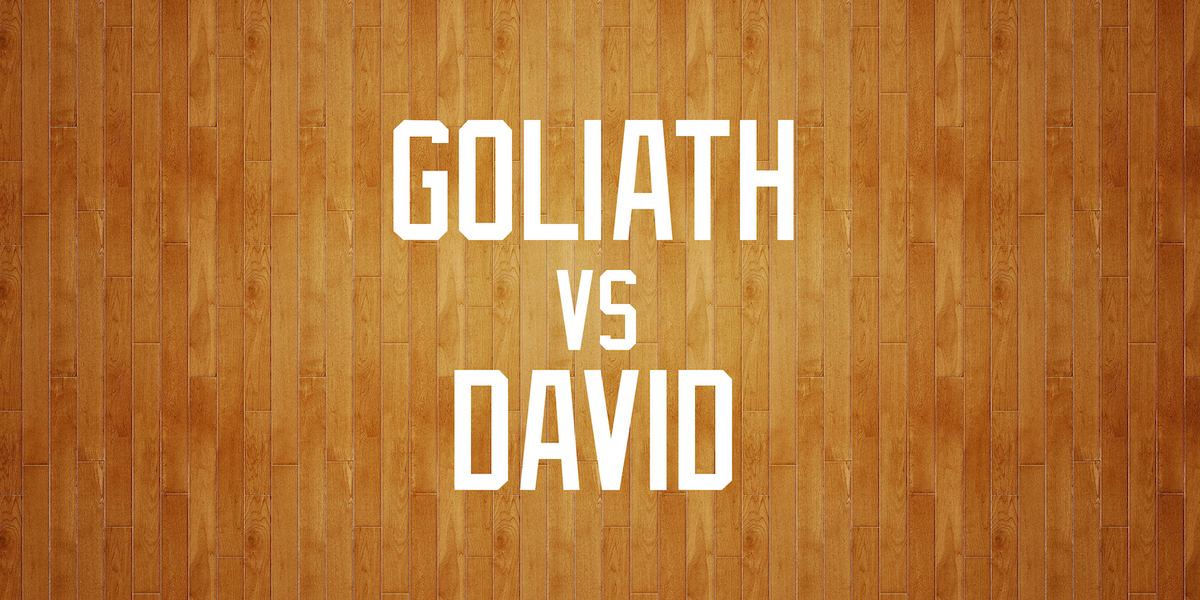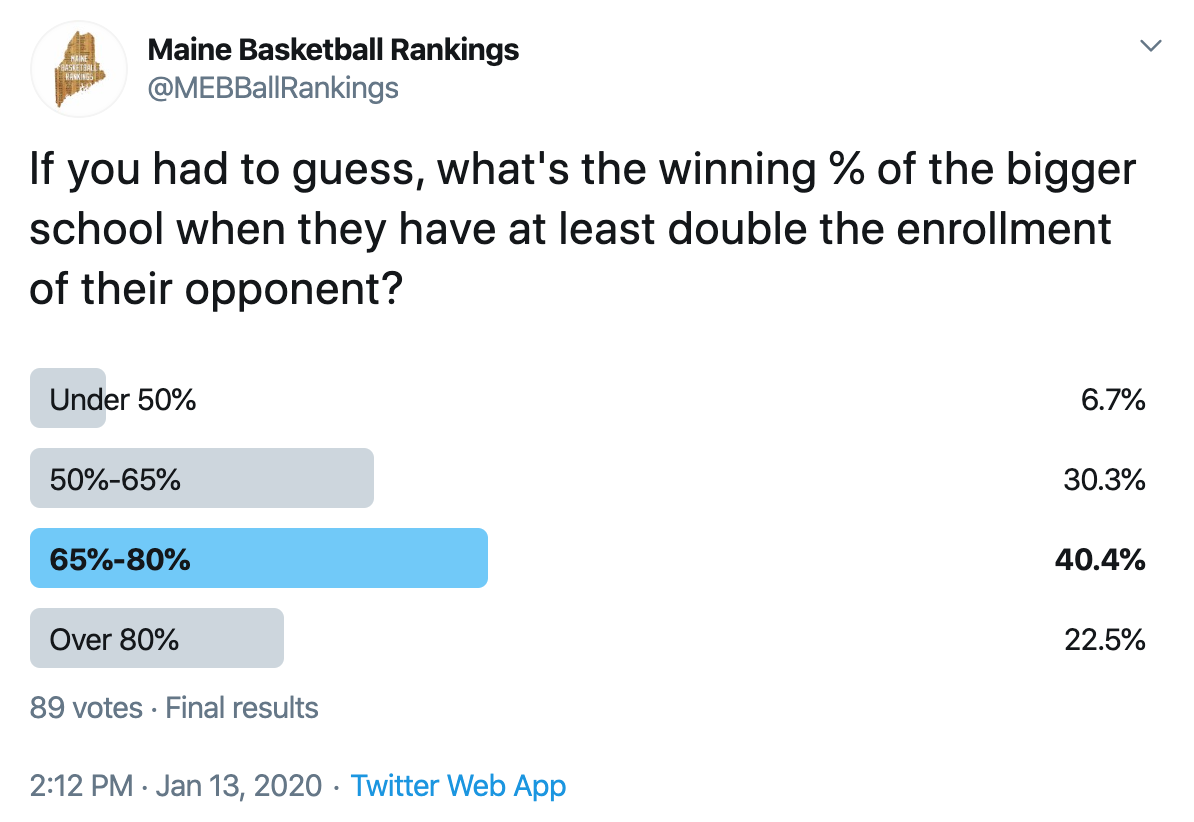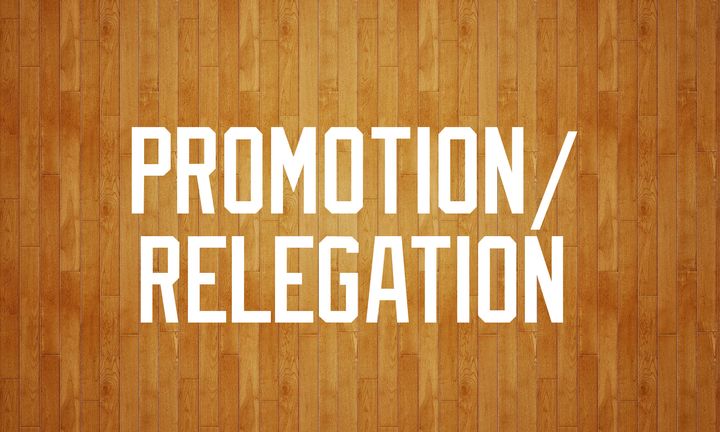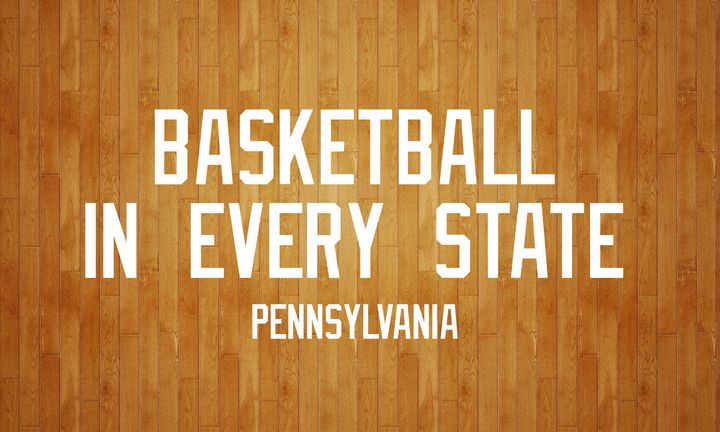Goliath vs. David
Football reclassification is in the news again, as the MPA considers how to shuffle the deck chairs on a ship where overall numbers are slowing sinking and an increasing number of schools are jumping into the 8-man lifeboats.

Football reclassification is in the news again, as the MPA considers how to shuffle the deck chairs on a ship where overall numbers are slowing sinking and an increasing number of schools are jumping into the 8-man lifeboats.
As always, there’s a contingent bemoaning the problem of the Big Schools and why, oh why can’t we compete??? And since this discussion will naturally lead to basketball and the enrollment “problem” there, let’s take a look at the enrollment problem, shall we? How can a school possibly compete? What’s a small school to do?
I plugged the enrollment of every school into the Model going back to the beginning of last season. If there’s an enrollment issue, it’ll find it.
First, I put the boys and girls in buckets by class and ran a correlation calculation between a school’s enrollment and their Heal Points for last season. If Math isn’t your strong suit, that’ll kick out a number between -1 and 1. Negative one indicates a perfectly negative correlation. So as the enrollment goes up, the Heal Points go down. A positive one means that as enrollment goes up, so do the Heal Points. Zero means they aren’t connected at all. So for the 18-19 season:
- A Boys: -0.066
- A Girls: 0.284
- AA Boys: 0.211
- AA Girls: -0.169
- B Boys: 0.164
- B Girls: 0.507
- C Boys: 0.507
- C Girls: -0.217
- D Boys: 0.004
- D Girls: 0.404
That’s…not a lot of correlation. I’ve done this on various smaller sets before and the results are pretty much the same. There’s at most a slightly positive correlation, but nothing to get excited about. Honestly, I thought A Boys and D Boys would be higher and I already had a good idea how this would turn out.
[Photo missing]
But that’s full season totals and you could make an argument that it’s not enough data points.
So I ran an enrollment filter on every game in the state over the past season and a half, 3,710 games in all.
[Photo missing]
Over that same time period, the home team won 54.02% of those games. The bigger school? 58.16%. So being the bigger school, no matter how much bigger, is only a little more valuable than playing on your home floor. If you like your data in chart form, here it is. The green area is home court advantage. The blue is the winning percentage of the larger school. To put this in perspective, 50% is roughly the difference between Houlton and MDI (56%). The trend line here is positive, but not drastically so. The 200%+ includes differences all the way up to over 800%(!)
If a school has 4 times as many students as you do, I think we can all agree that’s not ideal. That’s what MDI would face if they had to play a super-team of Thornton Academy and Greely. The Trojans would probably lose.
[Photo missing]
I asked on Twitter what people thought the Winning % might be for games in which the Big School had at least twice the enrollment. The answer, if you’re wondering, is 64.81% (326-177).

So what does that mean for enrollment and classification? Well we probably shouldn’t put Forest Hills and Hampden in the same region, but I don’t think anyone is going to suggest that. The odds of going back down to 4 classes is…low. Too many schools see a smaller class as an easier path to a Gold Ball and don’t care how it impacts anyone else. That’s pretty clear in the voting and the MPA is only as good as the votes of the members.
But tying classification to enrollment is clearly a fool’s errand. There’s been a push from some corners for a soccer-style promotion/relegation model. Other states do this. I’ve always like the general concept. So let me throw out an idea I’ve been kicking around.
An Alternative
We start with where we are now. Or, we start where we are now and move some obvious candidates up/down a class. Hampden, Greely, MDI, the GSA boys. And so on. Simple enough. At the next classification cycle, we move two schools up a class and two schools down. But what’s the criteria?
- Only the schools in the 2/3 of a class’s enrollment span are eligible to go up. Ideally, everyone would be, but this is a pretty solid compromise. Central Aroostook doesn’t need to be in Class B.
- A school can only drop down one class. The Noble boys can’t go any lower than A, for example.
- If the boys team goes up, the girls don’t have to go with them, but the school can opt to, if it’ll make life easier. When the MPA went to 5 classes, they dropped the class weight from 5 points to 2 to encourage cross-class games, so this shouldn’t be a problem.
- The criteria is total Heal Points over a rolling 6-year period. 6 years is enough so that if a school has one amazing class or 2 or 3 good years, they won’t end up way over their heads when they graduate.
Is this a perfect system? No. It would work better with some scheduling reforms. But it should rather quickly level the competitive playing field in the A-C classes and using Heal Points is a more reliable method than Gold Balls or Regional Titles, as those can be easily skewed by a couple upsets and Cinderella runs.
But above all else, it gets us away from this madness of tying everything to enrollment.




Comments ()